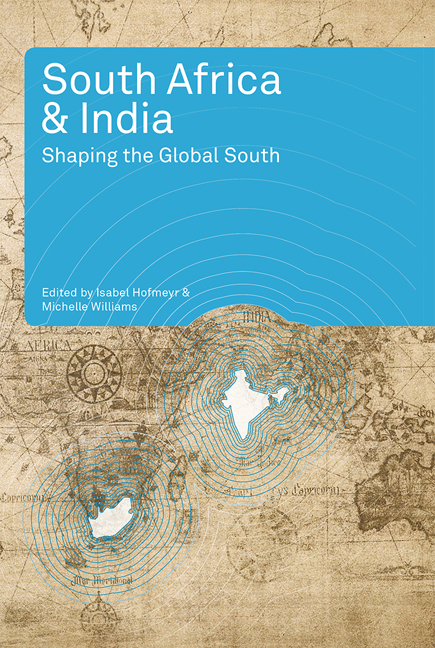Book contents
- Frontmatter
- Contents
- Acknowledgements
- Abbreviations and Acronyms
- Introduction
- Historical Connections
- Chapter 1 Gandhi's Printing Press: Indian Ocean Print Cultures and Cosmopolitanisms
- Chapter 2 Steamship Empire: Asian, African and British Sailors in the Merchant Marine c. 1880–1945
- Chapter 3 The Interlocking Worlds of the Anglo-Boer War in South Africa and India
- Chapter 4 The Disquieting of History: Portuguese (De)Colonisation and Goan Migration in the Indian Ocean
- Chapter 5 Monty … Meets Gandhi … Meets Mandela: The Dilemma of Non-violent Resisters in South Africa, 1940–60
- Socio-political Comparisons
- Conclusion
- Notes and References
- About the Authors
- Index
Chapter 2 - Steamship Empire: Asian, African and British Sailors in the Merchant Marine c. 1880–1945
from Historical Connections
Published online by Cambridge University Press: 21 April 2018
- Frontmatter
- Contents
- Acknowledgements
- Abbreviations and Acronyms
- Introduction
- Historical Connections
- Chapter 1 Gandhi's Printing Press: Indian Ocean Print Cultures and Cosmopolitanisms
- Chapter 2 Steamship Empire: Asian, African and British Sailors in the Merchant Marine c. 1880–1945
- Chapter 3 The Interlocking Worlds of the Anglo-Boer War in South Africa and India
- Chapter 4 The Disquieting of History: Portuguese (De)Colonisation and Goan Migration in the Indian Ocean
- Chapter 5 Monty … Meets Gandhi … Meets Mandela: The Dilemma of Non-violent Resisters in South Africa, 1940–60
- Socio-political Comparisons
- Conclusion
- Notes and References
- About the Authors
- Index
Summary
In late 1942 a young Bengali man called Syed Ali from Kalijuri in the Sylhet district decided to go to sea. In Calcutta, he found work in the engine room on the British merchant marine steamship SS McLeith, which was sailing for Cape Town (Choudhury, 1995:94). It was a dangerous time to sail the southern Indian Ocean. The Japanese navy had launched a significant submarine offensive against Allied shipping in the seas north-east of the Natal coast and German submarines were also occasionally striking off South Africa. The bodies of dead sailors were washing up on the Durban beachfront (Keane, 1995). But with war raging in nearby Burma, staying at home could not have been a very attractive option either. From the beginning of the voyage Syed Ali was bullied by the serang (boatswain or supervisor) of the stokehold, a man called Attik, from Ishkapur. In Cape Town, the ship docked for a short stay and the crew were given shore leave. To escape his persecutor, Syed Ali deliberately overstayed his leave and the ship sailed without him. The port police directed the young man to a seamen's boarding house and he was told by an official that he should remain there. There were several other Sylhetis in the boarding house, and one of them, a serang from Dinapur, turned out to be a friend of Syed Ali's uncle. This serang promised to find a berth for the lad when he next got a ship, and soon they sailed off together on the SS McNeill for Colombo in Ceylon (now Sri Lanka).
Syed Ali remained on this ship for a long period, plying the route back and forth between Colombo and Cape Town. Eventually paid off at Colombo, the now experienced seaman returned to Calcutta and spent a month visiting his family. He needed to get work again and back in Calcutta was offered a job on the SS Murdoch. But his papers had a ‘black mark’ because of his desertion of his ship on his first voyage, and this was an obstacle to getting employed. He went to see two local men who had connections with the seamen's union led by the powerful organiser Aftab Ali. These two worthies used their influence to solve the problem.
- Type
- Chapter
- Information
- South Africa and IndiaShaping the Global South, pp. 38 - 55Publisher: Wits University PressPrint publication year: 2011

